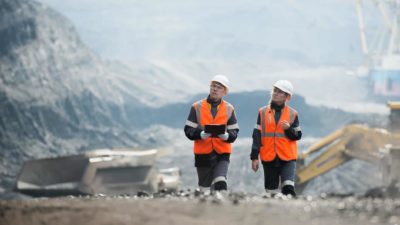It has been a year to forget for shareholders of some ASX lithium shares. The Pilbara Minerals Ltd (ASX: PLS) share price has dropped a painful 37% in 2024, as shown in the chart below. However, one bad year doesn't necessarily mean there's no hope for the ASX mining share.
It's common for resources to go through cycles of high prices and low prices, depending on what's happening with supply and demand.
Lithium is an interesting commodity because global demand is increasing over time. However, supply has also increased, which is a major part of the problem for the ASX lithium shares.
Considering the current low valuation, it's worthwhile asking whether the Pilbara Minerals share price can turn around next year.
Large players spot an opportunity
Before we get to the specifics of whether the ASX lithium share is an opportunity, I think it's worth noting other activity by other investors in the space. If we notice that other parties are making a move, it could be a useful signal.
Readers may have seen global mining giant Rio Tinto Ltd (ASX: RIO) recently made a takeover bid, which was accepted, for Arcadium Lithium CDI (ASX: LTM).
The offer of US$5.85 per share was a 90% premium to Arcadium's closing price on 4 October 2024.
Rio Tinto made the move to create a lithium business alongside its aluminium and copper operations to supply materials needed for the energy transition. Rio Tinto CEO Jakob Stausholm said:
This is a counter-cyclical expansion aligned with our disciplined capital allocation framework, increasing our exposure to a high-growth, attractive market at the right point in the cycle.
… Our team has deep conviction in the long-term value that combining our offerings will deliver to all stakeholders.
Rio Tinto suggests that lithium demand could rise at a compound annual growth rate (CAGR) of more than 10% by 2040, leading to a supply deficit.
With that in mind, let's consider what could happen next year.
Where could the Pilbara Minerals share price end up?
It may largely depend on the lithium price. If there are signs of a recovery, then the market may be more willing to pay a higher price for the miner, believing that profits could improve in the future.
However, it was pleasing to see that Pilbar Minerals was, at least temporarily, putting its Ngungaju plant into care and maintenance to reduce costs, strengthen its financial position, and reduce its production output. This could play a part in increasing lithium prices.
UBS expects the spodumene (lithium) price to be US$800 per tonne in 2025. Pilbara Minerals' realised price was US$682 per tonne in the three months to September 2024, so the broker is suggesting a possible 17% rise.
UBS suggested the increase in lithium prices would help earnings and cash flows but not enough to deliver material-free cash flow generation after capital expenditure. The broker thinks if lithium miners delay their growth projects, it could bring forward a "market rebalance, but the prospect of a short-term price spike remains unlikely".
The broker has a Pilbara Minerals share price target of $2.35, which is below the current value of $2.50. That implies UBS doesn't think the Pilbara Minerals share price will rise at all over the next 12 months.
However, if there is a price spike, I'd imagine the ASX lithium share's financials and market capitalisation would respond positively.







